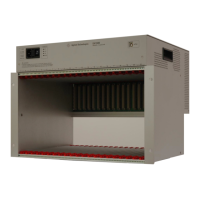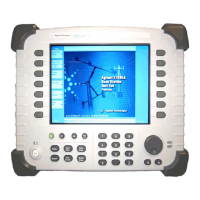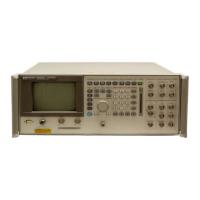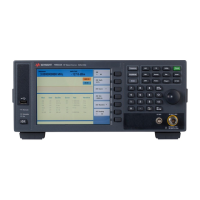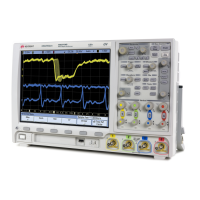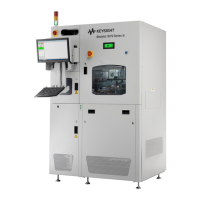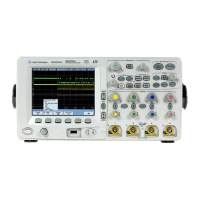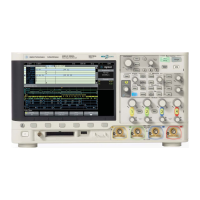72 Chapter3
Making EDGE (with GSM) Measurements
Making the Output RF Spectrum Measurement
Measurement Method
In this measurement, the transmitter (source) is set to transmit a GSM
frame at a given channel (frequency). The instrument acquires a time
record at a particular offset from the channel being transmitted. The
method of acquiring the time record is either a FFT/Inverse-FFT
method, or a direct time domain (DTD) method, depending on the
offset. These two methods and when they are used, will be described
below. When the offset is zero, the instrument is said to be measuring
the carrier. For a given offset frequency from the carrier, the
transmitter must not exceed a certain power level relative to the
carrier. The GSM specification defines the offsets and their maximum
absolute and relative power levels.
The general steps in making the measurement are as follows:
• Acquire time record (using either FFT or DTD methods, described
below)
• Synchronize for gating on the carrier - finds 50% and 90% portion of
burst for Spectrum Due to Modulation portion of the test
• Measure power of the carrier
• Compare each offset power to reference to get relative power level
The method of acquiring the time record is dependent on accuracy and
dynamic range. With no pre-ADC filter (infinite bandwidth), the entire
IF bandwidth of the IF signal is hitting the analog to digital converter
(ADC). The ADC gain is set based on the peak level at its input. The
dynamic range (noise floor) of the ADC is dependent on the gain
selected. For the type of signals being measured, the highest energy
within the IF bandwidth is at the carrier. Therefore,the lowest dynamic
range (highest noise floor) of the ADC occurs when the full energy of the
carrier is input to the ADC.
All offsets measured using the FFT method are done with the
instrument tuned such that the carrier is at the center of the IF
bandwidth. Therefore, the dynamic range of the offsets measured using
the FFT method is the same as that for the carrier. The dynamic range
requirement generally increases as the offset frequency increases. If the
dynamic range requirement exceeds what is available by FFT method,
the direct time domain (DTD) method utilizing the pre-ADC filter is
used.
The Direct Time Break Freq key setting is the first offset frequency
which is measured using the DTD method. Its range is determined by
assuring no aliasing occurs on FFT offsets and that the dynamic range
requirements are met.
